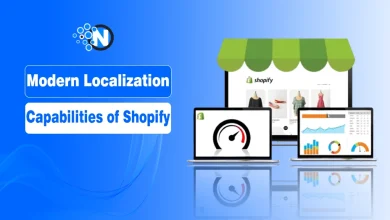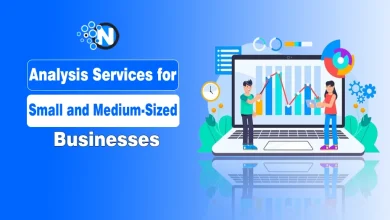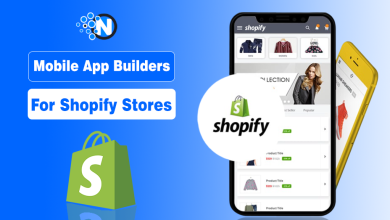
Picture this: you design a trendy graphic T-shirt, post it online, and when someone orders it, the product is printed and shipped, without you ever touching inventory. That’s the magic of print on demand (POD), and by 2025 it is more powerful, accessible, and data-driven than ever.
Whether you are an artist, entrepreneur, or side hustler, POD lets you test ideas, build a brand, and scale with minimal risk. In this guide, I will take you through how Print On Demand works, what to watch out for, and how to choose the best platforms in 2025.
What Is Print on Demand?
Print on demand (POD) is a fulfillment model where products are printed only when a customer places an order.
As compared to traditional retail or print runs where you buy inventory in bulk, POD means zero upfront stock and less risk. You upload your designs onto products, list them in your store, and when someone buys, your POD provider prints, packs, and ships it.
In effect, you act as the designer, marketer, and brand, but the logistics are handled by the provider. The global print on demand market is projected to be worth USD 12.96 billion in 2025, with a compound annual growth rate (CAGR) of 25.3% over the forecast period.
Why Is POD Growing Rapidly in 2025?
To understand why POD is such a powerful model now, it helps to see the trends:
- The global print on demand market is projected to reach USD 12.39 billion in 2025, growing at a CAGR of ~25.3% through 2033.
- The industry is expanding because customers increasingly expect personalized products and minimal waste.
- Many POD platforms are incorporating AI, eco-friendly materials, and localized printing to reduce shipping times and improve margins.
These shifts make 2025 a particularly auspicious year for newcomers to jump in.
How Print on Demand Works? Step by Step Guide
Want to know how Print On Demand works? Here is a breakdown of the POD process, from idea to earning profit:
- Choose a Niche & Products: Start by selecting what kind of products you want to sell (e.g. apparel, mugs, phone cases, wall art). Then pick a niche, say yoga, pets, minimalism, or fan culture, so your designs speak to a specific audience.
- Create Your Designs: You will need artwork, slogans, or graphics. Use tools like Photoshop, Illustrator, or online tools. Make sure images are high resolution and optimized (transparent backgrounds, correct dimensions, color profile).
- Select a POD Platform & Connect Your Store: Choose a POD provider that integrates with your store on Shopify, Etsy, WooCommerce, etc.. The integration allows orders to flow directly from your storefront to the POD provider.
- Upload Designs to Products: Within the POD platform, map your design onto the product mockups (T-shirts, mugs, etc.), write titles, descriptions, pricing, and assign variants (sizes, colors).
- Customer Places an Order: When someone orders via your store, the order is forwarded (usually automatically) to the POD provider with the design, product variant, and shipping address.
- Printing, Packaging & Shipping: The provider prints the design, packages it (often with your branding options, if available), and ships it directly to the customer.
- You Receive Earnings: You pay the base cost (product + printing + shipping). The difference between your sale price and that base cost is your profit.
Pros & Cons of Print on Demand
Pros
- No upfront inventory costs
- Wide product range and customization options
- Low risk, as you pay only when a sale occurs
- Ability to test designs quickly
- POD handles production and fulfillment, freeing you to focus on design & marketing
Cons
- Lower profit margins (because per-unit cost is higher)
- Limited control over packaging, shipping speed, or quality
- Potential inconsistencies between orders or suppliers
- Dependent on third-party platform reliability
- Heavy competition; requires branding and marketing to stand out
Best Print on Demand Platforms in 2025
Below are some of the leading Print On Demand platforms in 2025. Understand their features and pick a platform that is widely suitable to you.

1. Printful
Printful is one of the most trusted and full-featured POD companies in 2025, known for quality, reliability, and brand support. It operates fulfillment centers worldwide and enables faster delivery in many regions.
The product catalog is broad (apparel, home goods, accessories). You get mockup generators, sample orders, branding options (custom labels, inserts), and seamless integration with major and the best eCommerce platforms. Because of its reputation, many sellers use Printful as a benchmark for quality.
Key Features
- Broad product catalog (clothing, wall art, accessories)
- Global fulfillment centers for faster shipping
- Integration with Shopify, WooCommerce, Etsy, and more
- Custom branding — labels, inserts, packaging
- Design & mockup tools + sample orders

2. Printify
Printify operates as a marketplace of printing partners, which gives sellers flexibility to choose among providers based on cost, location, and quality. With over 500 products, Printify lets you experiment with different suppliers to optimize margins.
Pricing transparency helps you see base costs clearly. Because of multiple printing partners globally, you can route orders to suppliers closer to the buyer to reduce shipping costs and delays.
Key Features
- 500+ product options across categories
- Multiple print providers for cost & speed choices
- Transparent pricing and profit calculator
- Integrations with Shopify, Etsy, WooCommerce
- Global shipping and routing optimization

3. Spring (Teespring)
Spring (formerly Teespring) positions itself as a creator-first POD platform. It’s suitable for influencers, content creators, and small brands who want to monetize their audience with minimal friction. Spring allows you to create your own brand storefront.
Additionally, it lets you push products directly via social media platforms and handle everything from printing to support. Because it is geared for creators, it includes features to boost visibility to fans.
Key Features
- Creator monetization with no upfront costs
- Built-in storefront and branding tools
- Social media links & integrations with YouTube and TikTok
- Product catalog including apparel, mugs, accessories
- Fulfillment, customer service, and shipping handled

4. Redbubble
Redbubble is a marketplace-style POD platform geared toward artists and designers who want exposure rather than building their own store. Upload your art once, and buyers can find your products in a large, searchable marketplace.
Further, Redbubble handles all production, shipping, and returns. For creators who prefer to focus purely on design and digital marketing, Redbubble’s built-in audience is a strong advantage.
Key Features
- Built-in marketplace with global audience
- No storefront setup required
- Broad product categories (stickers, apparel, home decor)
- Zero upfront cost or inventory risk
- Full handling of fulfillment, shipping, and support

5. Zazzle
Zazzle emphasizes customization and personalization more than most platforms. Buyers can modify designs, add names, dates, or messages. This feature makes Zazzle popular for gifts, weddings, and events.
The marketplace is large, which gives your designs additional exposure. Zazzle handles production, printing, and shipping, which frees creators from logistical burdens.
Key Features
- Buyer personalization (custom messages, names)
- Large marketplace with existing traffic
- Diverse product options (stationery, gifts, apparel)
- No upfront costs to join
- Reliable fulfillment and shipping

6. SPOD (Spreadshirt POD)
SPOD is prized for its speed: many orders move to production in as little as 48 hours. For sellers who want quicker turnaround (which helps customer satisfaction), SPOD is attractive.
It offers over 100 products and includes a design tool that’s easy for beginners. Integration with eCommerce platforms ensures your store syncs smoothly with SPOD’s backend.
Key Features
- Fast production (48-hour goal)
- 100+ customizable products
- Simple design editor for non-designers
- Integrates with Shopify, WooCommerce, etc.
- Transparent pricing and consistent fulfillment

7. Society6
Society6 focuses on art-driven, premium home and lifestyle products (prints, furniture, decor). It targets buyers who value design, aesthetics, and unique artistic expression. Artists upload their work and it becomes available across multiple formats.
Also, Society6 handles manufacturing, shipping, and support. For visual creators looking to sell their art beyond apparel, Society6 offers a high-end venue.
Key Features
- Focus on home decor & art products
- Strong marketplace brand for artists
- No cost to list products
- Artist royalties per sale
- Full handling of production & shipping

8. Gelato
Gelato stands out for combining POD with local production and environmental focus. With printing partners in over 30 countries, Gelato routes orders to the facility nearest the buyer to reduce cost, time, and carbon footprint.
It integrates with major eCommerce systems and supports both creative and business sellers. For entrepreneurs who want a balance of speed, sustainability, and reach, Gelato is a solid choice.
Key Features
- Local printing in 30+ countries
- Eco-conscious practices and packaging
- Wide product catalog (stationery, apparel, gifts)
- Integrations with Shopify, WooCommerce, Etsy
- Global fulfillment network

9. Merch by Amazon
Merch by Amazon allows creators to tap into Amazon’s massive audience. You upload your design, choose a product type, set a price, and Amazon handles production, distribution, and customer service.
Because many customers trust Amazon, your products benefit from its reputation and fulfillment speed. For sellers who want passive income without logistics, Amazon’s platform is powerful.
Key Features
- Access to Amazon’s large customer base
- Prime shipping advantages
- Zero upfront inventory or printing costs
- Royalties when sales occur
- Amazon handles production, shipping, and support

10. Gooten
Gooten is built for scale: it offers a catalog of over 150 products and robust business tools. Its platform is designed for sellers who want to grow and manage operations efficiently. With analytics, automated ordering, multiple supplier options, and integrations, Gooten supports both small and larger businesses. Its reliability and flexibility make it a strong option for those looking beyond a side hustle.
Key Features
- 150+ product catalog
- Business-grade tools and analytics
- Multiple supplier options for flexibility
- Integration with Shopify, WooCommerce, etc.
- Reliable fulfillment and support

Tips to Succeed with POD in 2025
- Research your niche: Choose a market where demand exists but competition isn’t overwhelming.
- Prioritize supplier quality and fulfillment speed: Request samples before scaling.
- Use smart pricing: Consider base cost, shipping, and competitor pricing.
- Brand your products: Use custom packaging, labels, and inserts if available.
- Promote aggressively: Leverage social media, influencers, SEO, and paid ads.
- Scale smartly: Start with a few designs, monitor performance, then double down on winners.
- Focus on customer experience: Delays or quality issues harm reputation more than low margins.
Final Thoughts
These are the details on how Print on Demand works.
Print on demand is a powerful model for creators who want to sell custom products without inventory risk. In 2025, the ecosystem is more developed than ever, with global printing, AI tools, sustainability options, and mature platforms. Whether you are launching your first design or scaling to a full eCommerce brand, POD lets you test ideas, build a brand, and grow without the usual logistical headaches.
Pick platforms that match your goals, create with purpose, and let POD handle the production.




